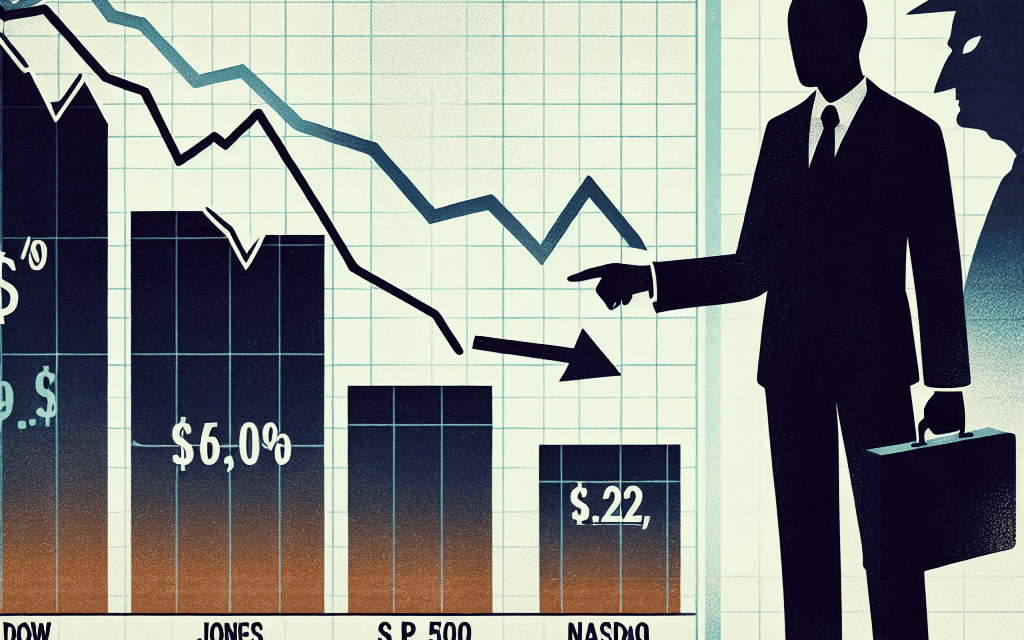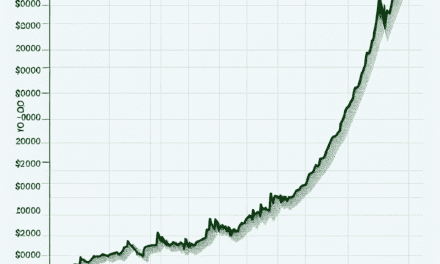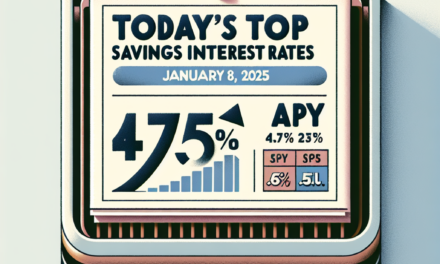“Market Tumbles: Powell’s Stance Shakes Dow, S&P 500, Nasdaq”
Introduction
In the latest stock market developments, major indices such as the Dow Jones Industrial Average, the S&P 500, and the Nasdaq Composite are poised for a downturn following Federal Reserve Chair Jerome Powell’s recent statements. Powell’s dismissal of imminent rate-cut expectations has sent ripples through the financial markets, prompting investors to reassess their strategies amidst a backdrop of economic uncertainty. As the central bank maintains its cautious stance on monetary policy, market participants are bracing for potential volatility, reflecting the ongoing tension between inflationary pressures and growth prospects. This update delves into the implications of Powell’s remarks and their impact on the broader market landscape.
Impact Of Powell’s Statements On The Stock Market
In recent developments, the stock market is poised for a downturn as Federal Reserve Chairman Jerome Powell’s recent statements have dashed hopes for imminent rate cuts. Investors, who had been eagerly anticipating a potential easing of monetary policy, were met with disappointment as Powell emphasized the need for continued vigilance in combating inflation. This shift in expectations has sent ripples through the financial markets, with the Dow Jones Industrial Average, S&P 500, and Nasdaq Composite all set to experience declines.
Powell’s remarks came during a closely watched press conference following the Federal Reserve’s latest policy meeting. While the central bank opted to maintain interest rates at their current levels, Powell’s comments made it clear that any future rate cuts are not on the immediate horizon. He underscored the importance of maintaining a restrictive monetary stance to ensure that inflation remains under control. This stance, while aimed at stabilizing the economy, has left investors grappling with the reality of a prolonged period of higher interest rates.
The impact of Powell’s statements on the stock market is multifaceted. Firstly, higher interest rates tend to increase borrowing costs for businesses and consumers alike. This can lead to reduced spending and investment, which in turn can slow economic growth. As a result, companies may face challenges in maintaining their profit margins, leading to potential declines in stock prices. Investors, who had been banking on a more accommodative monetary policy, are now recalibrating their strategies to account for a less favorable interest rate environment.
Moreover, the technology sector, which has been a significant driver of market gains in recent years, is particularly sensitive to changes in interest rates. Many tech companies rely on borrowing to fund their growth initiatives, and higher rates can increase their cost of capital. Consequently, the Nasdaq Composite, which is heavily weighted towards technology stocks, is expected to bear the brunt of the market’s reaction to Powell’s statements. Investors in this sector are likely to reassess their positions, potentially leading to increased volatility in tech stocks.
In addition to the direct impact on stock prices, Powell’s dismissal of rate-cut expectations has broader implications for investor sentiment. The anticipation of lower interest rates had fueled optimism in the market, with many investors viewing it as a catalyst for further gains. However, with this prospect now off the table, market participants may adopt a more cautious approach. This shift in sentiment could lead to increased market volatility as investors navigate an uncertain economic landscape.
Furthermore, Powell’s emphasis on controlling inflation highlights the ongoing challenges faced by policymakers in balancing economic growth with price stability. While the Federal Reserve’s commitment to curbing inflation is commendable, it also underscores the complexities of managing an economy in a post-pandemic world. The interplay between monetary policy, inflation, and economic growth will continue to be a focal point for investors as they assess the potential risks and opportunities in the market.
In conclusion, Jerome Powell’s recent statements have set the stage for a potential downturn in the stock market, with the Dow, S&P 500, and Nasdaq all poised for declines. The dismissal of rate-cut expectations has prompted investors to reassess their strategies in light of a prolonged period of higher interest rates. As the market grapples with these new realities, the coming weeks will be crucial in determining the trajectory of stock prices and investor sentiment.
Analysis Of Dow, S&P 500, And Nasdaq Trends
In recent developments within the financial markets, the Dow Jones Industrial Average, the S&P 500, and the Nasdaq Composite are poised for a downturn as Federal Reserve Chair Jerome Powell has dismissed expectations for imminent rate cuts. This shift in sentiment comes amid a backdrop of economic uncertainty and evolving monetary policy, which have collectively influenced investor behavior and market dynamics. As we delve into the trends affecting these major indices, it is crucial to understand the broader context in which these changes are occurring.
To begin with, the Dow Jones Industrial Average, a barometer of the U.S. stock market’s health, has been experiencing fluctuations as investors digest Powell’s remarks. The Fed Chair’s firm stance against premature rate cuts underscores the central bank’s commitment to curbing inflation, which remains a primary concern for policymakers. Consequently, this has led to a recalibration of market expectations, with investors reassessing their strategies in light of a potentially prolonged period of elevated interest rates. The Dow, which comprises 30 blue-chip companies, is particularly sensitive to such macroeconomic signals, as these firms are often seen as bellwethers for the broader economy.
Similarly, the S&P 500, which represents a broader swath of the market with its inclusion of 500 large-cap companies, is also feeling the impact of Powell’s comments. The index has been under pressure as sectors that are typically interest rate-sensitive, such as technology and consumer discretionary, face headwinds. Higher borrowing costs can dampen corporate profits and consumer spending, leading to a more cautious outlook among investors. Moreover, the S&P 500’s performance is often viewed as a reflection of investor sentiment regarding economic growth prospects, which are currently clouded by concerns over inflation and geopolitical tensions.
Transitioning to the Nasdaq Composite, which is heavily weighted towards technology stocks, the implications of Powell’s dismissal of rate-cut expectations are particularly pronounced. The tech sector, known for its growth-oriented companies, often relies on low interest rates to fuel expansion and innovation. As a result, the prospect of sustained higher rates has prompted a reevaluation of valuations within the sector, leading to increased volatility. Investors are now more discerning in their approach, favoring companies with strong fundamentals and resilient business models over speculative plays.
In addition to these index-specific trends, it is important to consider the broader economic landscape that is influencing market behavior. Inflationary pressures, driven by supply chain disruptions and rising commodity prices, continue to pose challenges for policymakers and investors alike. Furthermore, geopolitical uncertainties, such as trade tensions and conflicts, add another layer of complexity to the investment environment. These factors collectively contribute to a cautious market sentiment, as participants weigh the potential risks and rewards of their investment decisions.
In conclusion, the anticipated decline in the Dow, S&P 500, and Nasdaq reflects a confluence of factors, including Powell’s firm stance on interest rates and the broader economic challenges facing the global economy. As investors navigate this complex landscape, they must remain vigilant and adaptable, considering both macroeconomic indicators and company-specific fundamentals. While the path forward may be fraught with uncertainty, a disciplined and informed approach can help market participants effectively manage risk and capitalize on opportunities as they arise.
Investor Reactions To Dismissed Rate-Cut Expectations
In the wake of Federal Reserve Chair Jerome Powell’s recent remarks, investor sentiment has taken a noticeable shift, leading to a projected decline in major stock indices such as the Dow Jones Industrial Average, the S&P 500, and the Nasdaq Composite. Powell’s dismissal of imminent rate-cut expectations has sent ripples through the financial markets, prompting investors to reassess their strategies and recalibrate their portfolios. This development comes at a time when market participants were eagerly anticipating potential monetary easing, which many believed would provide a much-needed boost to economic growth and corporate earnings.
Powell’s comments, delivered during a closely watched press conference, emphasized the Federal Reserve’s commitment to maintaining its current monetary policy stance. He underscored the importance of data-driven decision-making, highlighting that any future rate adjustments would be contingent upon sustained improvements in economic indicators such as inflation and employment. This cautious approach, while aimed at ensuring long-term economic stability, has dampened investor hopes for a more accommodative monetary environment in the near term.
As a result, investors are now grappling with the implications of a prolonged period of higher interest rates. Higher borrowing costs can weigh on corporate profits, as companies face increased expenses related to debt servicing. Additionally, consumer spending, a critical driver of economic growth, may also be adversely affected as individuals contend with higher interest rates on loans and credit. Consequently, sectors that are particularly sensitive to interest rate fluctuations, such as technology and consumer discretionary, are expected to experience heightened volatility.
Moreover, the absence of anticipated rate cuts has led to a reassessment of equity valuations. With the cost of capital remaining elevated, investors are likely to adopt a more cautious approach, scrutinizing corporate earnings reports and forward guidance with increased rigor. This shift in focus may result in a more selective investment landscape, where companies with strong fundamentals and resilient business models are favored over those with weaker financial positions.
In light of these developments, market participants are also paying closer attention to global economic conditions. Geopolitical tensions, trade dynamics, and supply chain disruptions continue to pose challenges, adding another layer of complexity to investment decision-making. As such, investors are increasingly seeking diversification opportunities, exploring alternative asset classes and geographic regions to mitigate potential risks.
Despite the current market uncertainty, some analysts remain optimistic about the long-term prospects of the U.S. economy. They argue that the Federal Reserve’s prudent approach to monetary policy could ultimately foster a more sustainable growth trajectory, reducing the likelihood of economic overheating and asset bubbles. Furthermore, ongoing fiscal stimulus measures and infrastructure investments are expected to provide additional support to economic activity, potentially offsetting some of the headwinds associated with higher interest rates.
In conclusion, Powell’s dismissal of rate-cut expectations has prompted a reevaluation of market dynamics, with investors adjusting their strategies in response to the evolving economic landscape. While the immediate outlook for major stock indices appears challenging, the focus on data-driven policy decisions and structural economic reforms may pave the way for a more resilient and balanced growth environment in the future. As investors navigate this period of transition, maintaining a diversified portfolio and staying attuned to macroeconomic developments will be crucial in managing risk and capitalizing on emerging opportunities.
Short-Term Vs Long-Term Market Projections

In the ever-evolving landscape of financial markets, investors are constantly seeking to balance short-term fluctuations with long-term projections. Recent developments have brought this dynamic into sharp focus, as Federal Reserve Chair Jerome Powell’s remarks have sent ripples through the stock market. Powell’s dismissal of imminent rate-cut expectations has led to a projected drop in major indices such as the Dow Jones Industrial Average, the S&P 500, and the Nasdaq Composite. This situation underscores the importance of understanding both short-term market reactions and long-term economic trends.
In the short term, Powell’s comments have injected a degree of uncertainty into the market. Investors, who had been hopeful for a more dovish stance from the Federal Reserve, were met with a reality check. The anticipation of rate cuts had fueled optimism, driving stock prices higher in recent months. However, Powell’s firm stance on maintaining current interest rates to combat inflation has tempered these expectations. As a result, the immediate reaction has been a sell-off, with traders recalibrating their strategies to align with the new monetary policy outlook.
Despite the short-term volatility, it is crucial to consider the broader economic context. The Federal Reserve’s commitment to controlling inflation is a long-term strategy aimed at ensuring sustainable economic growth. While higher interest rates may pose challenges for businesses and consumers in the near term, they are intended to stabilize prices and prevent the economy from overheating. This approach, though potentially painful in the short run, is designed to create a more stable economic environment in the future.
Moreover, long-term market projections often take into account a variety of factors beyond immediate monetary policy decisions. Technological advancements, demographic shifts, and geopolitical developments all play a role in shaping the economic landscape. For instance, the ongoing digital transformation across industries continues to drive innovation and productivity gains, offering potential growth opportunities for investors with a long-term perspective. Similarly, demographic trends, such as aging populations in developed countries, may influence market dynamics over the coming decades.
In addition, geopolitical factors can have significant implications for long-term market projections. Trade relations, regulatory changes, and international conflicts can all impact investor sentiment and economic performance. As such, while Powell’s recent comments have captured headlines, they represent just one piece of a much larger puzzle that investors must consider when making informed decisions.
Ultimately, the interplay between short-term market reactions and long-term economic trends highlights the complexity of investing. While it is natural for investors to react to immediate news and adjust their portfolios accordingly, it is equally important to maintain a focus on long-term objectives. Diversification, risk management, and a clear understanding of one’s investment goals are essential components of a successful strategy.
In conclusion, the projected drop in the Dow, S&P 500, and Nasdaq following Powell’s dismissal of rate-cut expectations serves as a reminder of the delicate balance between short-term market movements and long-term economic projections. By considering both immediate developments and broader trends, investors can navigate the complexities of the financial markets with greater confidence and resilience. As the economic landscape continues to evolve, maintaining a comprehensive perspective will be key to achieving sustainable investment success.
Strategies For Navigating A Volatile Market
In the ever-evolving landscape of financial markets, investors are constantly seeking strategies to navigate periods of volatility. Recent developments have underscored the importance of such strategies, as Federal Reserve Chair Jerome Powell’s dismissal of rate-cut expectations has sent ripples through the stock market. The Dow Jones Industrial Average, S&P 500, and Nasdaq Composite are all poised for declines, reflecting the broader uncertainty that has gripped investors. In this context, understanding how to manage investments during turbulent times is crucial for both seasoned and novice investors alike.
To begin with, it is essential to recognize that market volatility is an inherent aspect of investing. While it can be unsettling, especially for those with significant exposure to equities, it also presents opportunities for astute investors. One effective strategy is diversification, which involves spreading investments across various asset classes, sectors, and geographic regions. By doing so, investors can mitigate the impact of a downturn in any single area, thereby reducing overall portfolio risk. For instance, while technology stocks may be under pressure due to interest rate concerns, other sectors such as healthcare or consumer staples might offer more stability.
Moreover, maintaining a long-term perspective is vital when navigating volatile markets. Short-term fluctuations, while often dramatic, do not necessarily reflect the underlying fundamentals of the economy or individual companies. Investors who focus on long-term goals and remain committed to their investment plans are better positioned to weather temporary storms. This approach requires discipline and patience, as it involves resisting the urge to make impulsive decisions based on market noise.
In addition to diversification and a long-term outlook, investors should also consider the role of asset allocation in managing volatility. Asset allocation refers to the distribution of investments across different asset categories, such as stocks, bonds, and cash. By adjusting the allocation based on market conditions and individual risk tolerance, investors can achieve a balance between risk and return. For example, during periods of heightened uncertainty, increasing exposure to bonds or other fixed-income securities can provide a buffer against equity market declines.
Furthermore, staying informed about economic indicators and central bank policies is crucial for making informed investment decisions. Powell’s recent comments highlight the significance of understanding monetary policy and its implications for financial markets. By keeping abreast of such developments, investors can better anticipate potential market movements and adjust their strategies accordingly. This proactive approach can help mitigate risks and capitalize on opportunities as they arise.
Another important consideration is the use of stop-loss orders and other risk management tools. These mechanisms allow investors to set predetermined exit points for their investments, thereby limiting potential losses in the event of a market downturn. While not foolproof, such tools can provide an additional layer of protection and help investors maintain discipline during volatile periods.
In conclusion, navigating a volatile market requires a combination of strategies that emphasize diversification, long-term planning, asset allocation, informed decision-making, and risk management. As the Dow, S&P 500, and Nasdaq face potential declines in response to Powell’s remarks, investors must remain vigilant and adaptable. By employing these strategies, they can better position themselves to manage uncertainty and achieve their financial objectives, even in the face of market turbulence.
Historical Context Of Rate-Cut Expectations
In the ever-evolving landscape of financial markets, the anticipation of interest rate adjustments by the Federal Reserve has long been a focal point for investors. Historically, the expectation of rate cuts has often buoyed stock markets, as lower interest rates typically reduce borrowing costs for companies and consumers, thereby stimulating economic activity. However, the current scenario presents a deviation from this pattern, as Federal Reserve Chair Jerome Powell’s recent dismissal of rate-cut expectations has set the stage for a potential downturn in major stock indices, including the Dow Jones Industrial Average, the S&P 500, and the Nasdaq Composite.
To understand the implications of Powell’s stance, it is essential to consider the historical context of rate-cut expectations. Traditionally, the Federal Reserve has employed interest rate cuts as a tool to counteract economic slowdowns. For instance, during the financial crisis of 2008, the Fed slashed rates to near-zero levels to stabilize the economy. Similarly, in response to the economic disruptions caused by the COVID-19 pandemic, the central bank once again reduced rates to support growth. These actions have historically led to rallies in the stock market, as investors anticipated improved corporate earnings and economic recovery.
However, the current economic environment presents a different set of challenges. Inflationary pressures have emerged as a significant concern, with consumer prices rising at rates not seen in decades. In this context, the Federal Reserve has shifted its focus from stimulating growth to curbing inflation. Consequently, Powell’s recent remarks underscore the central bank’s commitment to maintaining higher interest rates for an extended period, thereby dismissing any near-term expectations of rate cuts.
This shift in monetary policy has profound implications for the stock market. Higher interest rates increase the cost of borrowing, which can dampen corporate investment and consumer spending. Additionally, they make fixed-income investments more attractive relative to equities, potentially leading to a reallocation of capital away from stocks. As a result, the Dow, S&P 500, and Nasdaq are poised to experience downward pressure as investors recalibrate their expectations in light of Powell’s comments.
Moreover, the impact of Powell’s dismissal of rate-cut expectations extends beyond the immediate market reaction. It signals a broader shift in the Federal Reserve’s approach to monetary policy, emphasizing the importance of price stability over short-term economic growth. This change in focus reflects the central bank’s recognition of the long-term risks posed by persistent inflation, which can erode purchasing power and undermine economic stability.
In conclusion, the historical context of rate-cut expectations provides valuable insights into the current dynamics of the stock market. While past rate cuts have often been met with optimism by investors, the present scenario is characterized by a more cautious outlook. Powell’s dismissal of rate-cut expectations highlights the Federal Reserve’s commitment to addressing inflationary pressures, even at the expense of short-term market gains. As the Dow, S&P 500, and Nasdaq brace for potential declines, investors must navigate this complex landscape with an understanding of the evolving priorities of monetary policy. This nuanced approach will be crucial in managing risks and identifying opportunities in an environment where traditional market drivers are being redefined.
Expert Opinions On Future Market Movements
In the ever-evolving landscape of financial markets, investors are constantly seeking insights to navigate the complexities of stock market fluctuations. Recently, the Dow Jones Industrial Average, the S&P 500, and the Nasdaq Composite have been poised for a downturn, largely influenced by Federal Reserve Chair Jerome Powell’s recent remarks. Powell’s dismissal of imminent rate-cut expectations has sent ripples through the market, prompting experts to weigh in on the potential future movements of these major indices.
To begin with, Powell’s comments have underscored the Federal Reserve’s commitment to maintaining a cautious approach towards monetary policy. By signaling that interest rate cuts are not on the immediate horizon, Powell has effectively dampened investor optimism that had been building around the possibility of a more accommodative monetary stance. This has led to a recalibration of market expectations, as investors reassess their strategies in light of a potentially prolonged period of higher interest rates.
In this context, experts are closely monitoring the implications of Powell’s stance on various sectors within the stock market. For instance, technology stocks, which have been a driving force behind the Nasdaq’s impressive gains in recent years, may face headwinds as higher interest rates could increase borrowing costs and weigh on valuations. Consequently, some analysts suggest that investors might pivot towards more value-oriented sectors, such as financials and energy, which could benefit from a higher interest rate environment.
Moreover, the broader economic landscape is also playing a crucial role in shaping market sentiment. Inflationary pressures, supply chain disruptions, and geopolitical tensions continue to pose challenges, adding layers of complexity to the market’s trajectory. In light of these factors, experts emphasize the importance of a diversified investment approach, advising investors to consider a mix of asset classes to mitigate risks and capitalize on potential opportunities.
Furthermore, the global economic outlook remains a key consideration for market participants. As central banks around the world grapple with similar challenges, their policy decisions could have far-reaching implications for international markets. For instance, if other major economies adopt a more dovish stance, it could create a divergence in monetary policies, influencing capital flows and currency valuations. This interconnectedness underscores the need for investors to maintain a global perspective when evaluating potential market movements.
In addition to these macroeconomic factors, corporate earnings reports are also pivotal in shaping investor sentiment. As companies release their quarterly results, market participants are keenly analyzing earnings growth, profit margins, and forward guidance to gauge the health of individual sectors and the broader economy. Positive earnings surprises could provide a temporary boost to market confidence, while disappointing results might exacerbate existing concerns.
In conclusion, the current stock market environment is characterized by a confluence of factors that are influencing investor sentiment and market dynamics. Powell’s dismissal of rate-cut expectations has prompted a reassessment of strategies, with experts highlighting the importance of diversification and a global outlook. As investors navigate this complex landscape, staying informed and adaptable will be crucial in making well-informed decisions. While uncertainties persist, the insights provided by experts offer valuable guidance for those seeking to understand and anticipate future market movements.
Q&A
1. **What is the current trend in the stock market?**
The stock market is set to drop.
2. **Which major indices are mentioned?**
The Dow Jones Industrial Average, S&P 500, and Nasdaq.
3. **What is causing the stock market to drop?**
Federal Reserve Chair Jerome Powell dismissing rate-cut expectations.
4. **Who is Jerome Powell?**
The Chair of the Federal Reserve.
5. **What are rate-cut expectations?**
Anticipations that the Federal Reserve will lower interest rates.
6. **How do interest rates affect the stock market?**
Lower interest rates can boost the stock market by making borrowing cheaper and encouraging investment.
7. **What is the general investor sentiment based on Powell’s comments?**
Cautious or negative, as rate cuts are not expected.
Conclusion
The stock market is poised for a downturn as Federal Reserve Chair Jerome Powell’s dismissal of rate-cut expectations has dampened investor sentiment. The Dow, S&P 500, and Nasdaq are all set to decline, reflecting concerns over prolonged higher interest rates. Powell’s stance suggests a continued focus on combating inflation, which may lead to tighter financial conditions and impact market valuations. Investors are likely to remain cautious, reassessing their strategies in light of the Fed’s commitment to maintaining current interest rate levels.





